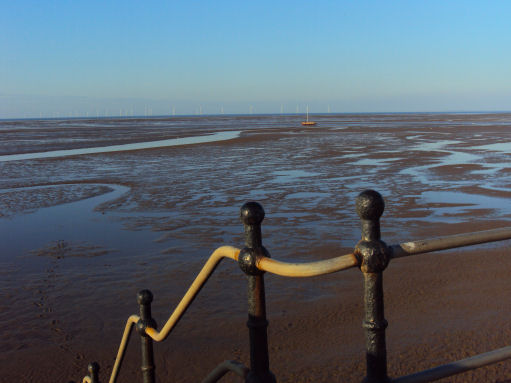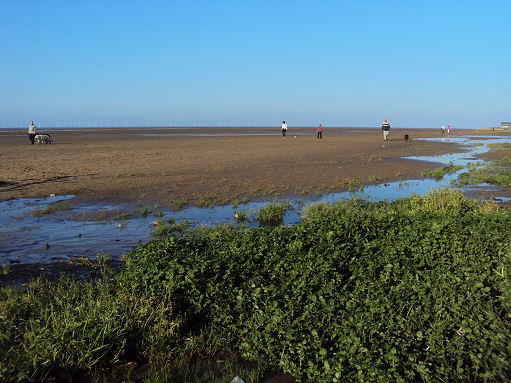Hoylake
OS Grid ref:- SJ215888
The seaside town of Hoylake is located at the mouth of the River Dee Estuary, on the north western corner of the Wirral Peninsula. The town we see today formed through the merging of two ancient villages, Little Meols and Hoose. Little Meols was the area near the present Hoylake railway station and Hoose was the present old village area around the Plasterer's Arms. Great Meols was the area now known simply as Meols. The name Hoylake derives from Hoyle Lake, a channel of water between Hilbre Island and Dove Point, protected by a wide sandbank known as Hoyle Bank.

Hoylake is the home of the Royal Liverpool Golf Club, built in 1869, on the site of the Royal Hotel racecourse. It is the second oldest golf links in England. The town supports a permanent lifeboat station, manned by the RNLI. Initially founded in 1803 by the Mersey Docks and Harbour Board, it is one of the oldest in the country and during this time the Hoylake lifeboat crews have saved more than 800 lives. The Hoylake Lifeboat Museum houses an interesting collection.

In 1690, King William III set sail to Ireland from Hoylake, to fight the Battle of the Boyne against the Roman Catholic, Stuart King, James II. The location of his departure is still known known as Kings Gap.
Nearby places of interest
Red Rocks Nature Reserve situated to the west of Hoylake and adjacent to the beautiful Dee Estuary and an important site for nature conservation on the Wirral Peninsula.
West Kirby stands on the estuary of the River Dee at the northwest corner of the coast of the Wirral Peninsula. The name West Kirby is of Viking origin, originally Kirkjubyr, meaning 'village with a church'. The town was mentioned in the Domesday Book.
Thurstaston Common a popular spot with walkers for the superb views, at just 90m above sea level, it offers some of the best the Wirral has to offer, from the summit of Thurstaston Hill the views encompass the Dee Estuary and the hills of Wales.
Leasowe Lighthouse Constructed of hand made brick in 1763 by the Mersey Docks and Harbour Board, Leasowe Lighthouse on the Wirral Peninsula is the oldest brick built lighthouse in the United Kingdom.
Fort Perch Rock at New Brighton on the Wirral, is a coastal defence which was constructed built between 1825 and 1829. It was built to protect the Port of Liverpool and as a fortified lighthouse to replace the old Perch Rock Light.
